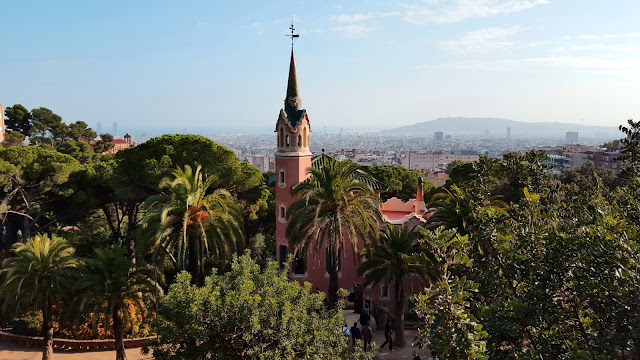Written by Ben Kesp
 |
| Parc Guell, Barcelona |
Imaginative, inspiring, wonderful are just a few words to describe Antoni Gaudí’s designs. In the city that showcases most of his work, Barcelona is credited with a unique style of architecture. A Spanish architect from Catalan, Antoni Gaudí’s style can only be described as unique and very distinctive.
 |
| Park Guell, Barcelona |
 |
| Park Guell, Barcelona |
He was born in June of 1852, the son of Francesc Gaudí i Serra, a coppersmith and Antonia Cornet i Bertran possibly in Reus or Riudoms in the Catalonia region of Spain, however, it is unclear. With a great love for the outdoors, his works were often inspired by nature. Unique was his work that it impressed the Catalan industrialist Eusebi Guell, who sought Gaudí to commission many outstanding works that would leave his legacy on the city of Barcelona and the world. Such works are the Guell Wine Cellars, the Guell Pavilions, Guell Palace, Park Guell and more. Through his work, he became friends with the Marquis of Comillas, who was the father in-law of Count Guell. Through this association, he designed the El Capricho in Comillas, a small town in the north of Spain.
 |
| Palau Guell, Barcelona |
 |
| Palau Guell, Barcelona |
 |
| Palau Guell, Barcelona |
Of all his work carried out, one of his masterpieces still lies unfinished and is in construction today with a projected completion date of 2025 to 2030, however, these dates keep moving and they possibly could be even pushed out to a later date! It was in 1883, Gaudí was commissioned on a project to build a cathedral called Basílica i Temple Expiatori or Sagrada Família. Gaudí gave the building his own design and devoted the remainder of his life from 1915 to his death in June of 1926 working on the project. Any visitor to Barcelona today cannot miss the Sagrada Família that has become a landmark building on the landscape of the city.
 |
| Interior Sagrad Família, Barcelona |
 |
| Interior Sagrad Família, Barcelona |
 |
| Interior Sagrad Família, Barcelona |
What can be said of Gaudí’s style? The oriental arts may have inspired him however it was the Gothic revival that most influenced him. He believed that Gothic art was imperfect and he sought to perfect this half resolved style. Following this, he moved towards Modernism that applied an artistic work to produce an extreme ornamental style. His works cannot be boxed into one design, but are a mixture of styles with an inspiration from nature around him for example cones, reeds, bones, rushes, etc. This mix of styles and use of materials lead to Gaudí adapting nature into architectural forms, pushing the boundaries of geometry and engineering thus giving him a position in the history of architecture. His work in art is very expressive, extravagant and has a unique form. For me, what stands out the most about his work that makes it recognisable, is the defying use of curves and shapes not normally associated with building design in addition to the vivid use of colour.
 |
| Palau Guell, Barcelona |
Certainly, a visit to Guell Park is worth seeing when in Barcelona along with Casa Batlló, Casa Milá, Guell Palace, and many more around the city including the Sagrada Família.













Comments
Post a Comment